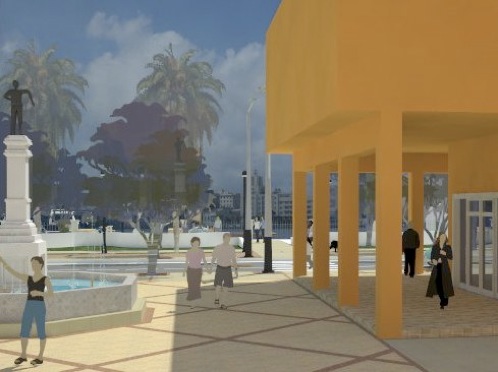Third Havana Harbour Charrette - 2009


Apr 9, 2011




























The Cuban and Norwegian Chapters of C.E.U. - Council for European Urbanism
Urban Design
Workshop


Thirty architects, landscape architects, planners, and designers from Australia, Europe, North America, and Cuba recently came together for the Third Havana Harbour Charrette.
The purpose of this, and the other two charrettes preceding it, is to bring together members of both the international and Cuban design community to propose strategies for implementing the concepts of “A Master Plan for XXI Century Havana,” authored by Cuban architect Julio César Pérez Hernández.
In Mr. Pérez Hernández’s words, “the plan is not an official document, but an act of love for the City of Havana and those who live there.”
The charrette’s focus is the waterfront revitalization portions of the master plan. The harbor was historically the economic engine of Havana’s economy but like many ports has been hit by its inability to handle large container shipping resulting in obsolescence of the port facilities.
The study area comprises Old Havana, the elevated link from the National Railroad Station, the former Tallepiedra power station, the Atarés peninsula, the traditional Afro-Cuban community of Regla, the redundant adjacent oil refinery and the attractive fishing port of Casablanca.
It is generally believed that the harbor’s regeneration can provide a good model for the rest of the city.
The charrette’s strategic development proposals provide for up to 25,000 units of social housing, community services, and infrastructure supported by 2.5 million square meters of for-profit construction for international enterprises.
Proposed commercial activities to be housed in the for-profit buildings build on the capabilities of Cuba’s well-educated workforce. They include extra-care and private housing; health services for international patients; small-scale, clean industry; expanded maritime leisure (including more cruise ships); and a roll-on-roll off ferry terminal.
Pérez Hernández commenting on this year’s results, said: “Again, as with the master plan, the three international charrettes held in 2007, 2008 and 2009 have provided a long term vision and a comprehensive planning strategy for the area for the first time in history.”
“Team work stemming from the charrette has produced lots of ideas that encompass the proposal of a spine boulevard along the harbor perimeter to become a buffer zone that grants protection and public space, and allows views to the water.”
“The transformation of the current derelict industrial character of the harbor and its conversion into a modern recreational, commercial and sport harbor provides the city with a magnificent opportunity to create new economic and urban values, a new image and a safe environment.”
“The harbor, thus, can become a gateway to the city with new mixed-use buildings responding to the waterfront, a new public transportation system that incorporates different means of transport -from bicycles to light rail - and ensures total connectivity,” added, Pérez Hernández.
Roger Zogolovitch, representing the UK-based Academy of Urbanism that was attending the charrette for the first time said: “The charrette was provocative, exciting and a highly creative intervention with contributors drawn from all over the world. The opportunity of engaging with the social, economic, historical and cultural heritage of Havana made the journey memorable.”
“The open ended charrette process has the benefit of a two way exchange - of us all learning form the Cuban experience and in our final report leaving our imprint of ideas, emotions and visual response as part of the exciting process of evolution of this extraordinary Caribbean city. The UK Academy of Urbanism welcomes its inclusion and our members present enjoyed the creative engagement.”
Summary
Download: 2009-havana-harbour-charrette.pdf the 01/10/10 updated report. 9.2 MB - 52 pages - letter size - portrait orientation